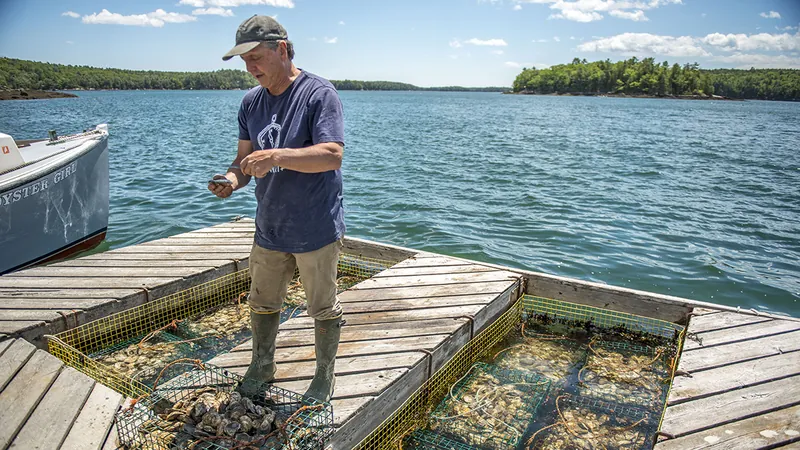
Scientists Unveil New Species of Giant Isopod: Meet Bathynomus vaderi!
2025-01-21
Author: Ming
Introduction
In a remarkable marine discovery, researchers have identified a new species of giant isopod in the depths of the South China Sea, naming it Bathynomus vaderi. The name pays homage to the iconic Sith Lord, Darth Vader, from the beloved Star Wars franchise, as the isopod's helmet-like head strikingly resembles his famous mask.
The Bathynomus Genus
Bathynomus is a predominant genus of scavenging isopods found in both tropical and temperate deep-sea environments. Described for the first time back in 1879 by the esteemed French zoologist Alphonse Milne-Edwards, the Bathynomus genus includes nearly 20 living species, alongside four fossilized ones. These immense creatures are primarily located in the cold, remote waters of the Atlantic, Pacific, and Indian Oceans, with a notable reputation for their bizarre size; some species can reach lengths of over 30 cm (11.8 inches).
Culinary Popularity in Vietnam
While they may look intimidating, Bathynomus creatures are as harmless to humans as their smaller relatives, the common woodlouse. In recent years, however, they have gained traction in Vietnamese culinary culture, being served as a delicacy in various forms, even drawing comparisons to the luxurious lobster for their delectable flesh.
“Over the last seven years, Bathynomus has become increasingly popular in Vietnam as a delicacy in contemporary culinary culture,” explains Peter Ng, a researcher from the National University of Singapore. “The rising demand has pushed fishermen to intensify their efforts to collect these crustaceans from the South China Sea.”
Discovery of Bathynomus vaderi
The researchers managed to collect a diverse range of specimens from local fisheries in Quy Nhon city, leading to the identification of the new species. This particular variant, Bathynomus vaderi, can grow up to 32.5 cm (12.8 inches) long and weigh over 1 kg. It stands out among its cousins due to distinct morphological features that include a uniquely shaped clypeal region and shorter appendices.
Habitat and Significance
Found exclusively near the Spratly Islands, Bathynomus vaderi is notably the fourth species in the Bathynomus lineage characterized by upwardly curved spines and the second supergiant discovered in the vicinity of the South China Sea.
The revelation of such an unusual species calls attention to the deep-sea ecosystems that remain poorly understood. “The existence of Bathynomus vaderi—a creature as large as this—reminds us of the countless mysteries hidden beneath the surface of Southeast Asian waters,” the researchers emphasize. They contend that ongoing exploration is crucial as humanity begins to exploit deep-sea habitats for fisheries, energy, and mineral resources.
Importance of Deep-Sea Exploration
As researchers argue, enhancing our understanding of deep-sea biodiversity is paramount, particularly with the challenges of sustainable fishing for giant isopods and beyond. The study detailing this extraordinary find has been published in the journal ZooKeys and serves as a reminder of the uncharted wonders still waiting to be uncovered in our oceans.
Conclusion
Stay tuned for more exciting marine discoveries and insights into the depths of our unexplored waters!




 Brasil (PT)
Brasil (PT)
 Canada (EN)
Canada (EN)
 Chile (ES)
Chile (ES)
 Česko (CS)
Česko (CS)
 대한민국 (KO)
대한민국 (KO)
 España (ES)
España (ES)
 France (FR)
France (FR)
 Hong Kong (EN)
Hong Kong (EN)
 Italia (IT)
Italia (IT)
 日本 (JA)
日本 (JA)
 Magyarország (HU)
Magyarország (HU)
 Norge (NO)
Norge (NO)
 Polska (PL)
Polska (PL)
 Schweiz (DE)
Schweiz (DE)
 Singapore (EN)
Singapore (EN)
 Sverige (SV)
Sverige (SV)
 Suomi (FI)
Suomi (FI)
 Türkiye (TR)
Türkiye (TR)
 الإمارات العربية المتحدة (AR)
الإمارات العربية المتحدة (AR)